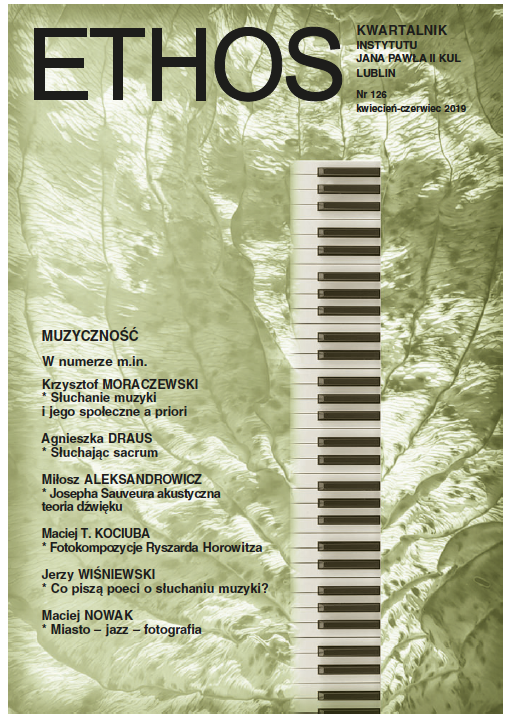AKUSTYCZNA TEORIA DŹWIĘKU MUZYCZNEGO JOSEPHA SAUVEURA
Joseph Sauveur’s Acoustic Theory of Musical Sound
Author(s): Miłosz AleksandrowiczSubject(s): Christian Theology and Religion
Published by: Katolicki Uniwersytet Lubelski Jana Pawła II - Instytut Jana Pawła II, Wydział Filozofii
Keywords: music; theory of music; acoustics; Joseph Sauveur; 18th century; France; musical thought; Enlightenment; sound
Summary/Abstract: The article presents an innovative theory of musical sound proposed by Joseph Sauveur (1653–1716), one of the ‘fathers of modern acoustics,’ at the Academy of Sciences in Paris in 1701. The author discusses the place of Sauveur’s ideas in the history of scientific and musical thought of the 17th and 18th centuries, the connection between his theory and the practice, and theory, of music prevalent at the time, the methodological innovativeness of Sauveur’s research, as well as the groundbreaking character of his conclusions that led to a reevaluation of the then existing canons of musical thought. The paper also shows the influence of the French scholar’s achievements on the further development of musical acoustics. Having discussed and counterpoised the two mutually exclusive ideas that inspired Sauveur’s new theory (i.e., on the one hand, the reference to the regularities present in nature, and, on the other hand, the intentional departure from such a reference), the author presents the main presuppositions of the theory in question: the idea that all musical pitches should be based on a fixed sound (son fixe), the precise units of measurement Sauveur introduced to determine the size of intervals (meride and heptameride), and a new method for calculating interval sizes using logarithms. The most important components of his theory—a very daring one at the time—were the concept of the internal complexity of musical sound (comprising a basic tone and harmonics), and the new musical system based on this concept. The hermeneutic analysis of the described facts reveals that it is necessary to revise a one-sided perception of Sauveur’s discoveries that remains widespread in scholarly publications on music theory. There is no doubt that the ideas presented in Principes d’acoustique et de musique exerted a significant influence on the musical thought developed in the 18th century and should be acknowledged not only in the field of mathematical and physical sciences, but also in the theory of music and music as an art.
Journal: Ethos. Kwartalnik Instytutu Jana Pawła II KUL
- Issue Year: 32/2019
- Issue No: 2
- Page Range: 114-147
- Page Count: 34
- Language: Polish
- Content File-PDF

